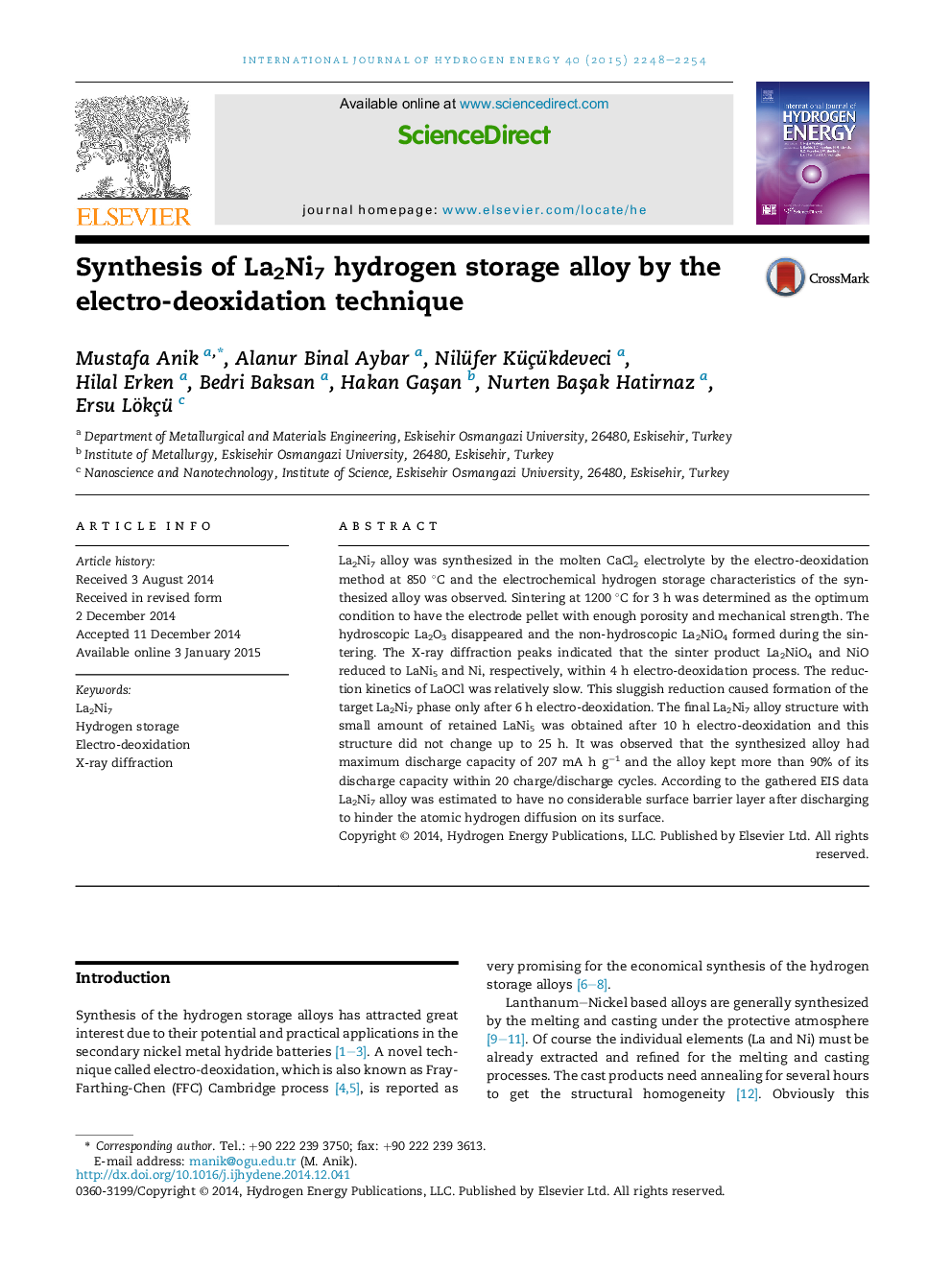| Article ID | Journal | Published Year | Pages | File Type |
|---|---|---|---|---|
| 7716378 | International Journal of Hydrogen Energy | 2015 | 7 Pages |
Abstract
La2Ni7 alloy was synthesized in the molten CaCl2 electrolyte by the electro-deoxidation method at 850 °C and the electrochemical hydrogen storage characteristics of the synthesized alloy was observed. Sintering at 1200 °C for 3 h was determined as the optimum condition to have the electrode pellet with enough porosity and mechanical strength. The hydroscopic La2O3 disappeared and the non-hydroscopic La2NiO4 formed during the sintering. The X-ray diffraction peaks indicated that the sinter product La2NiO4 and NiO reduced to LaNi5 and Ni, respectively, within 4 h electro-deoxidation process. The reduction kinetics of LaOCl was relatively slow. This sluggish reduction caused formation of the target La2Ni7 phase only after 6 h electro-deoxidation. The final La2Ni7 alloy structure with small amount of retained LaNi5 was obtained after 10 h electro-deoxidation and this structure did not change up to 25 h. It was observed that the synthesized alloy had maximum discharge capacity of 207 mA h gâ1 and the alloy kept more than 90% of its discharge capacity within 20 charge/discharge cycles. According to the gathered EIS data La2Ni7 alloy was estimated to have no considerable surface barrier layer after discharging to hinder the atomic hydrogen diffusion on its surface.
Related Topics
Physical Sciences and Engineering
Chemistry
Electrochemistry
Authors
Mustafa Anik, Alanur Binal Aybar, Nilüfer Küçükdeveci, Hilal Erken, Bedri Baksan, Hakan GaÅan, Nurten BaÅak Hatirnaz, Ersu Lökçü,
